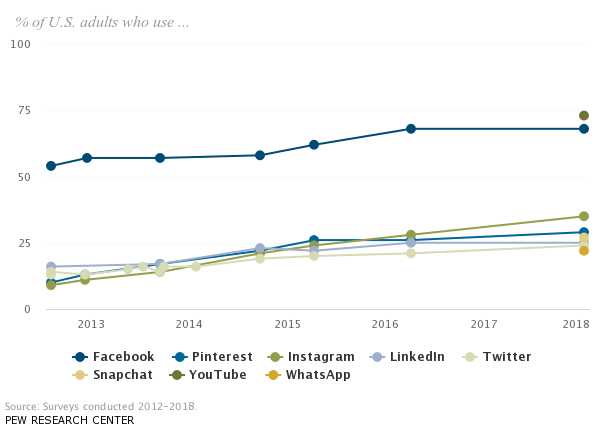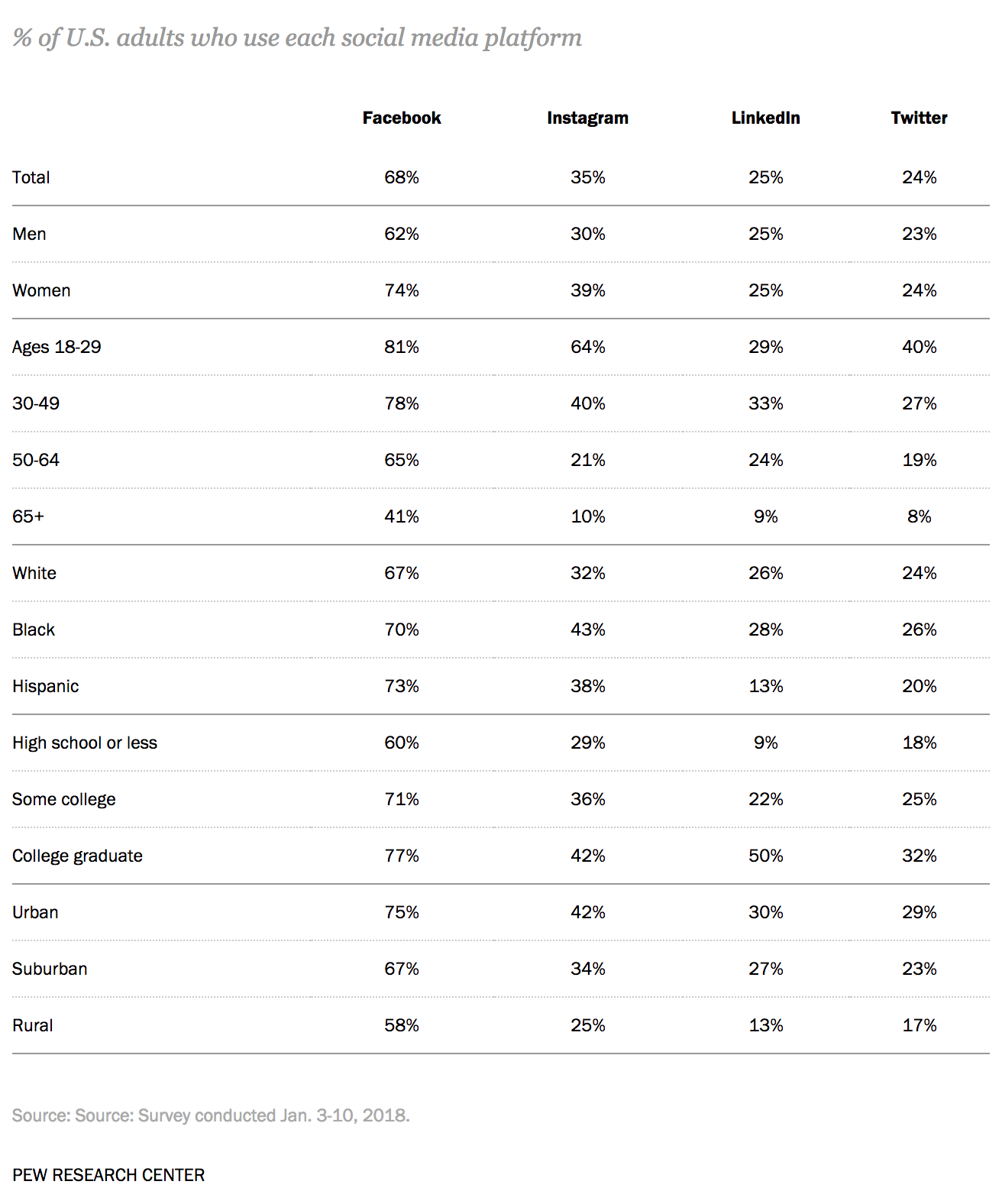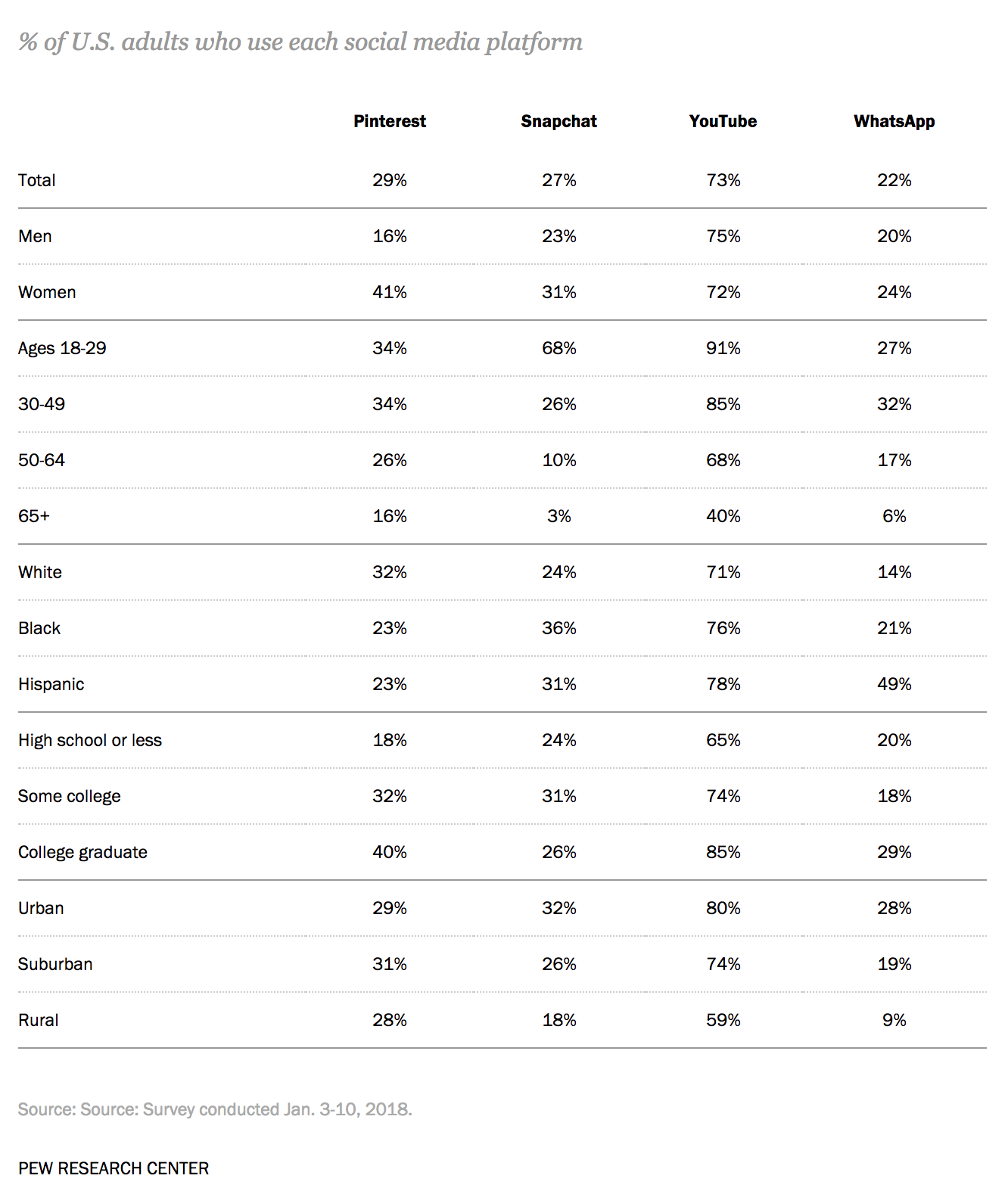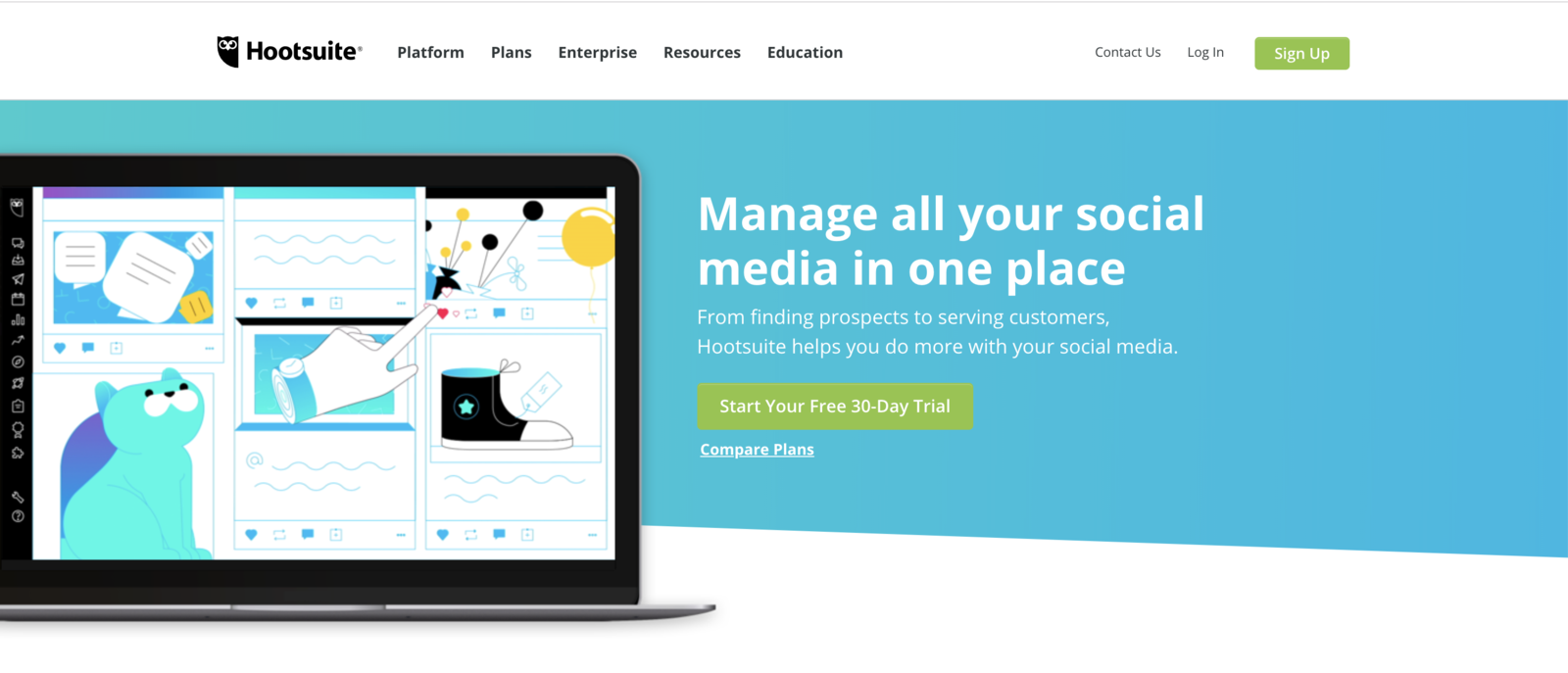
Creating a Social Media Strategy for Your Photography Business
There are hundreds of reasons to be on social media these days. It’s a great way for you to connect with your potential customers, help them fall in love with your brand, and keep them up to date with everything new and exciting in your business. Some aspects of social media also help give your SEO a boost, helping your business get found on search engines.
The problem is, many photographers are not using social media strategically. They either post only about themselves and their businesses, instead of making their posts client-centric, or they’re posting a mash-up of content that’s not relevant to their prospects. Without a clear strategy behind your social media, your posts can create confusion for prospective clients. Remember: a confused mind always says no. So, let’s talk about how to get strategic about your social media presences so that prospects are ready to say an emphatic yes to working with you.
Before we get started, let me create clear expectations about what you will get out of this article. We will be talking strategy, not tactics. Strategy encompasses the why for being on social media, who you are targeting, the overarching what of your message, and how you will convey all of this. We won’t be talking specific tactics like when to post on what platforms or which hashtags. That’s because algorithms change every day, and a platform that’s hot today might be dead tomorrow (I’m looking at you, Vero).
However, with a solid social media strategy, you will have a customer-centric focus to everything you do. If you know your target customer has moved on from Instagram to Snapchat, you’ll know to invest your energies in testing that platform for your business. If you know your ideal customer like the back of your hand, you’ll be able to research a few great hashtags that will help you get noticed in relevant Instagram feeds. So let’s dive in!
For in-depth info on using specific social media for your marketing efforts, check out these resources:
Know Your Customer, Know Your Brand
The most important piece of advice anyone can give you about social media is to know who your customer is. We go deep into that topic in this article. So if you’re still unclear on who your ideal client is, take time to do the exercises we walk you through over there. Once you know who your ideal client is, everything else in your social media marketing flows more easily from there.
Where to Post
There’s a lot of pressure in the online marketing world to be everywhere at once, especially on social media. If you’re not on Facebook, Instagram, Pinterest, Twitter, YouTube, Snapchat, Flickr, 500px and the newest app that just popped up, you’re losing out on sales, right? The answer is only “yes” if your ideal client is the kind of person that needs you to be present on every single social media channel. If we’re being honest, the likelihood of that is very slim. Most of us have a few favorite channels we check in with throughout the day, and we leave the rest.
For example, I’ve never gotten into Twitter or Snapchat. In fact, I’ve deleted those apps from my phone. So if I am someone’s ideal client type, they don’t have to worry about targeting me there. Conversely, I am a heavy Instagram user and love to hang out in a few Facebook groups. I also research a lot on YouTube. If a brand wants me to buy their product or service, those are the best places to find me.
Think about your ideal client and where they spend the most time online. If they are a mom, they’re likely a heavy Facebook or Instagram user. If they are a bride-to-be, maybe they’re Pinning away on their lunch break. If they’re a high school senior, they are more likely on Snapchat or Instagram. Just by creating an avatar for the kind of client you want to work with in your business, you can cut down on the clutter of social media and focus on a few key platforms.
Before you decide on the platform(s) your business will use, ask yourself the following questions:
- Is my audience or ideal client here?
- If so, how are they using this social media channel?
- Can I use this channel to help me achieve meaningful business goals (i.e. create awareness and interest around my offerings or drive traffic to my website)?
According to the PEW research center, as of 2018, Facebook is still the dominant social media channel with 68 percent of U.S. adults active on the platform. YouTube also spiked in 2018 with 78 percent of adults.
PEW also gives a breakdown of demographics for each of the top social channels:
When looking at these demographics, compare them to your ideal client avatar and ask yourself which channels deserve the biggest investment of your time and effort.
The Conundrum for the Multifaceted Business
Maybe you’re multi-passionate, and it’s reflected in your business. You love landscape photography just as much as you love weddings. When faced with the social media question you struggle, wondering if you should have different profiles for different offerings. Maybe you even need different websites for each genre! Then you get so overwhelmed that you shut your computer off and decide to deal with social media another day.
If this is you, let’s do a little investigating about your ideal client. Could your ideal wedding couple also be lovers of amazing landscape photography? Whether you do local or destination weddings, a well-curated social profile of inspiring landscape images could marry (no pun intended) perfectly with wedding photography in a similar style. In that case, your ideal clients may love seeing all of your offerings on the same website and social media feeds. They might want to buy your prints and hire you for their wedding.
Conversely, if you do high-end commercial photography but also have a boudoir division of your brand, and you don’t think your commercial clients and boudoir clients are the same, then consider multiple profiles. Or, if your studio offers weddings, boudoir and newborn portraits, you might struggle with whether everything can exist in an umbrella brand. As always, it comes down to who you are targeting. If your potential bride might be a perfect fit for boudoir before or after the wedding, and would love newborn photos if she has children, then your social media becomes a great umbrella for all of these sub-offerings.
Remember what we discussed before about a confused mind saying no. If your ideal client might get a bit confused when they come to your social media profile because your offerings don’t all relate to them, keep them separate. But if you can create harmony for all of your offerings, simplify and have one profile per channel.
What to Post
This brings us to the perennial question of what to post. So many business owners complain that they don’t know what to post on social media, and this comes from one of two places: they don’t know who their ideal client is, or they think social media is about them and their business. Or both. Unless you’re a celebrity or influencer, your social media isn’t about you. It’s about your clients.
If you’re running a business, the quickest way to get someone to unfollow you is to only talk about yourself. This doesn’t mean you should never post a selfie or a photo of your dog. In fact, seeing your friendly face and your awesome pooch might be a great way for a prospective client to connect with you and feel comfortable with the idea of working with you. But your social media content will only interest them if it provides them value.
So how do you provide value to your prospective customers? Part of this will have to do with who your prospective client is. However, there are some tried-and-true things that work for us all: education, inspiration and connection. If you can educate your prospect, inspire them or help them feel connected to something, you’re doing social media right! Feel free to sprinkle in products and behind-the-scenes glimpses into your business to humanize things. But most of us are spending time on our social media feeds seeking those three main things.
Let’s think about what that could look like in practice. If you’re a wedding studio, you could curate a Facebook or Instagram feed with beautiful images from your portfolio. However, each post could have a different caption type. Caption a photograph of an amazing bouquet with a little bit of education around what kinds of flowers fit various wedding themes. An image of a sun kissed-bride could inspire, or the caption could offer a tip on how to time out your ceremony to make sure there’s plenty of time for amazing photos.
Remember how we talked about linkable content and how it needs to answer a market demand? Well, think about your social media content as being a micro-blog. Your images and captions could answer those small questions you know your ideal client has, it could make them feel like a part of a community or it could even help inspire them to aspire to something.
To Cross-Post or Not to Cross-Post
Next, ask yourself if there’s a unique angle of your brand’s story that you can tell on each platform you want to use. In other words, if Instagram is the “online magazine” version of your business, what aspect of your business can you share on Facebook? No one wants to see the same content across all platforms. So make sure you have a unique mix and you’re not just reposting the same image and caption across Facebook, Twitter and Instagram – unless you foresee having different audience segments on each channel.
Otherwise, think of the kinds of unique content you can create or curate for your audience on each platform. For example, your Facebook posts could focus on connection, while your Instagram posts align with inspiration.
Determine Your Objective and Track Goals That Align to Your Business
Ask yourself, why is your business on social media? Sometimes social media feels like a popularity contest to a lot of creatives. They focus on how many likes, comments or shares their recent post got. But if those likes are not coming from people who align with their ideal customer, then the metrics that come with them don’t matter. Instead, think about what social media can help your business achieve. Perhaps it’s a customer who understands the value of your service more. Maybe it’s more of a sense of community with your potential customer base.
Once you understand what your overall purpose for being on social media is, and you know who your ideal customer is, you need not worry about what’s popular or trending on social media. Now it’s more important to think about what your marketing goals are and how they translate into your objectives.
Your goals also need to align with the S.M.A.R.T goals framework by being:
- Specific
- Measurable
- Attainable
- Relevant
- Time-bound
Making sure all of your social media goals fall within this framework helps keep you accountable to your business’ bottom line.
Ask yourself what your goals will be and what metrics you will want to track through social media. Keep in mind, many brands use social media to help increase awareness and interest. That’s because social media is not an intent-based channel. What that means is that people are on social media for those three things we talked about before: education, inspiration, and connection. They aren’t shopping on social media. So, while not impossible, it is more difficult to generate leads and bookings directly with social media.
If you use social media for awareness and interest, here’s an example objective and goal you might set for your business:
My objective for being on social media is to connect with potential customers and inspire them with beautiful photography. To achieve this, my goal is to grow my audience by 500 followers this month. I will also study which posts get the most engagement and look for similar content to continue inspiring and growing my audience.
With this in mind, there are several social media metrics that marketers and business owners should think about. Think back on the customer journey and the A.I.D.A. model we outlined in our digital marketing strategy article. The various metrics we will want to measure fall into Awareness, Interest, Decision and Action. Remember: likes, comments and shares are wonderful, but unless they are tied to helping prospective customers move closer to the Decision and Action phases, they are just vanity metrics.
Here’s a quick snapshot of some metrics you can measure during each phase:
- Awareness
- Brand awareness
- Audience growth
- Post reach
- Interest
- Engagement rate (likes, comments, shares)
- Decision
- Website click-through rate
- Action
- Conversions (often, a contact form fill)
- Conversion rate
Don’t worry if you’re unsure how to measure all of these metrics. We will do a deep dive into social media analytics in a future article. For now, just ask yourself what your overall objective is with social media, what goals you will set, and what metrics you can use to measure the success of each.
Audit Your Current Social Media
It’s important to evaluate what you’re doing on social media and how effective it is. Ask yourself a few questions:
- What has been working for you on each channel you’re active on?
- To help you identify this, look at your top three recent posts and see if you can identify any kind of patterns. Is there a similar content type or were they all posted at specific times of day?
- What hasn’t been working?
- Similarly, look at what patterns you can identify in your worst performing content in the same time range.
- Who has been connecting with you on your social media channels? If it’s not your target market, ask yourself the following questions:
- Are your ideal clients using the social media platforms you’re on?
- If they are, how are they using this platform?
- Can you use this platform to achieve your business goals?
- How does what you’re doing on social media compare to what your competitors are doing?
Research the Competition
If you’re living in a market that’s saturated, then you already know there’s competition out there. And researching those competitors is a fantastic way to see what is and what isn’t working with your target market. In both cases, look to see what you can improve upon. By looking at what your competitors are doing, you’ll see where the opportunities are.
For example, perhaps they spend most of their time engaging with their audience on Facebook but rarely update their Instagram. As long as you know your audience is underserved on Instagram, you’ll know it’s a good place to invest your effort. This doesn’t mean you won’t spend efforts on Facebook either, but you’ll know you have the potential to have a great impact elsewhere too.
Just as you’ll want to be looking at your own posts to see what resonates and what doesn’t, keep an eye on what your audience engages with on your competitors’ pages. If a post is doing well, dig into the comments and see if there’s a reason. Conversely, if post falls flat, is there a reason that you can identify? In both cases, make a note of these things and adjust your social media content plan accordingly.
Define Which Channels You Will Use and How
Remember how we talked about cross-posting? Here is where we will determine what the purpose of each channel will be. It’s a good idea to create a mission statement for each channel so you remain clear why you’re on that channel and what your goals are.
For example, if your business is focused on senior photography, you may decide that Instagram is where you will display your best portfolio images, Snapchat is where you will showcase behind-the-scenes glimpses of how amazing your shoots are, and Facebook is where you will engage with parents.
With this model, you’ll note that the teenager might be the person you engage with in the Awareness and Interest stages, but there’s likely a handoff to the parent in the Decision and Action stage. The parents will have different questions and content needs than the teenager, so the social content mix will be different.
Even if the decision maker differs from your ideal customer, making sure that your channels have a consistent voice, tone and style is very important. You want to make sure that followers know what to expect from your brand, no matter what channel they follow you on.
Create a Social Media Calendar
Posting high-quality content consistently is the best way to grow any social media following. But we’ve all been there: that slight panic when we realize that we have no idea what to post.
Creating a social media calendar can help ease that panic because you will have planned out what you will share and when. The ideal social media calendar will have all of your social media activity planned out: what images, links, blog posts and videos you will share, where everything will be shared and when.
First, determine what your posting frequency will be. This will be different based on each channel and audit of your efforts you completed for each. Next, determine what content mix you will be using. It can be helpful to decide to categorize your posts. Maybe you will use Inspire, Educate, Connect and Sell as categories. You could also use Blog Post, Video, Announcement, etc.
Finally, decide what your ideal content mix will be. Remember that most of your content should be customer-focused, so don’t only post when you have a sale. A recommended mix is 80 percent helpful or interesting content and 20 percent of content that’s selling your business. Hootsuite also recommends the rule of thirds, which is:
- 1/3 of your content promotes your business or generates leads
- 1/3 of your content comes from other sources that align with your business
- 1/3 of your content engages with followers directly, either through answering questions, responding to comments, or re-posting user-generated content
There are plenty of tools out there to create a social media calendar, but a simple spreadsheet will suffice. You can even create different tabs for different months. All you need is:
- Channel
- Time and date you will post
- Post copy
- Link (if required)
- Image (if required)
- Your content category
Once you’ve filled out your content calendar, you don’t have to be a slave to posting every single post manually. There are a lot of great scheduling tools that you can queue your posts into. Hootsuite has a free plan that allows you to connect three social channels and schedule up to 30 posts! It also has a calendar integrated into its platform so that you’re able to see which posts are scheduled for which channel and when.
Bringing It All Together
Your social media strategy is incredibly important for your business. Oftentimes, it can be the first content point for potential customers in their journey to booking. Identifying your ideal client is the first step to being successful on social media. The second step is to define what success looks like to you by identifying your overall objective and the goals that will help you meet that objective.
Once you’re clear on these things, decide on what you will post where and when. Use a content calendar to help you stay accountable and keep your presence on each channel consistent. Then test and learn. Keeping a testing mindset to see what works best and what doesn’t will help you avoid getting discouraged.
As you craft and launch your new social media strategy, it’s important to keep tracking to see what is working and what’s not. Re-evaluate your strategy regularly to see what works the best and what tactics you can cut. With regular assessment and course correction, you will find that strategic use of social media can be a powerful tool to grow your business!



















